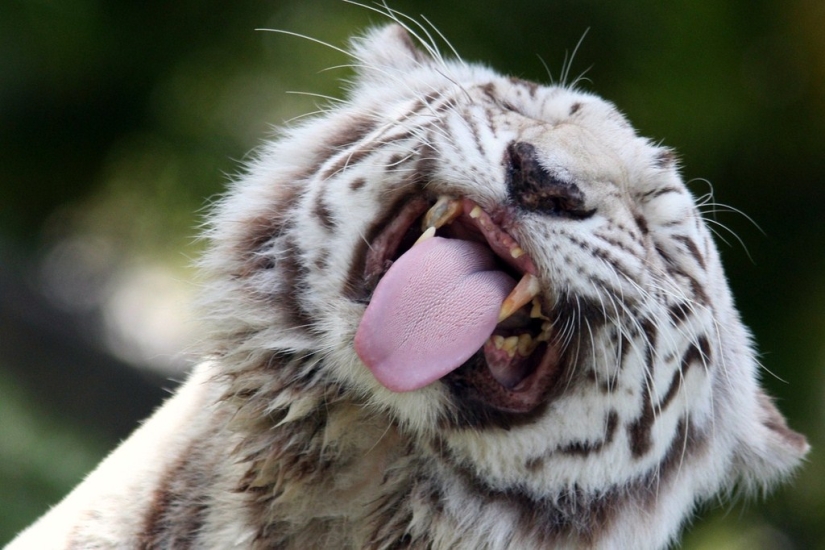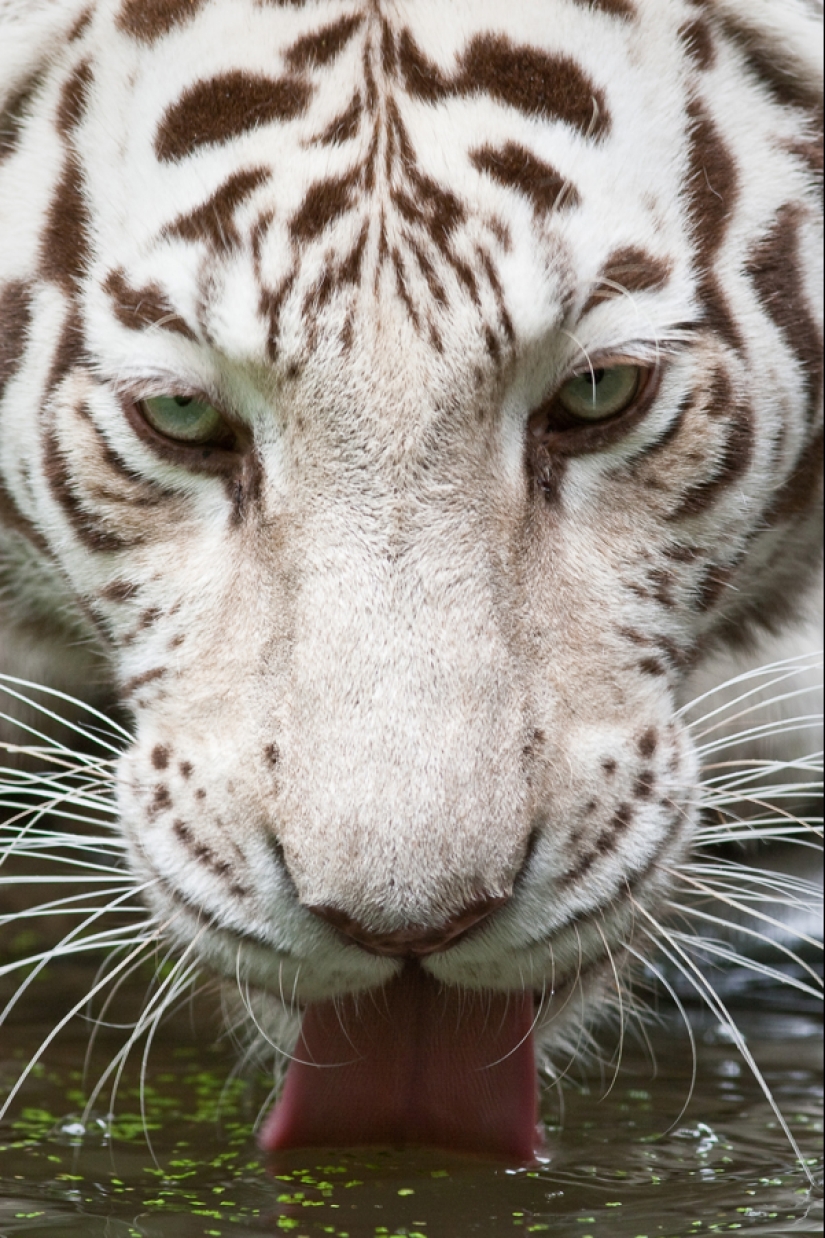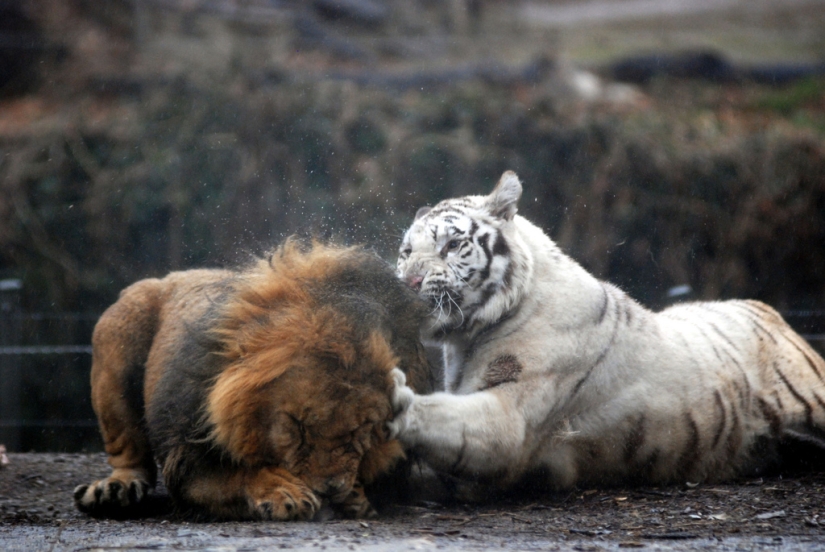The white tiger is a recessive mutant of the Bengal tiger, which is occasionally found in the wild in Assam, Bengal, Bihar and especially in the erstwhile Rewa state. Compared to regular-colored tigers without the white gene, white tigers tend to be larger than normal, both at birth and as adults. We present to your attention a selection of photographs of beautiful white tigers.


Kailash Sankhala, director of the New Delhi Zoo in the 1960s, said that "perhaps one of the functions of the white gene is to maintain a size gene in the population, if such a thing is ever needed, of course."

In the Bengal tiger subspecies, there were also individuals with black stripes. The same phenomenon can be found among individuals of the Amur tiger, and in history there have been cases when such individuals appeared in other species.

There are now several hundred white tigers in zoos around the world, about a hundred of them in India.

Nevertheless, their numbers are increasing.

The current population of white tigers includes pure Bengal and hybrid Bengal-Amur tigers, but it is not clear whether the recessive white gene came only from Bengal tigers, or whether the ancestors of Amur tigers also participated in this.

The white tiger is born as a result of the homozygous phenomenon of a recessive allelomorph in the genome.

In the wild, it is estimated that every 15,000 Bengal tiger is born white.

The existence of white Siberian tigers is not scientifically documented, despite occasional anecdotal evidence of sightings in regions where Siberian tigers live.

It is possible that the white mutation does not exist in the nature of Amur tiger populations: not a single white Amur tiger has yet been born in captivity, despite the fact that these subspecies are actively used for breeding (with a large percentage of outbreeding between different hereditary lines of Amur tigers in order to preserve genetics) .

The recessive allelomorph periodically becomes homozygous during such crossing, and in this case, a white baby may be born to “ordinary” parents, but so far there is no evidence of this.

The famous white Siberian tigers in captivity are not actually purebred.

This is the result of crossing Amur tigers with Bengal tigers.

The white coat gene is quite common among Bengal tigers, but the natural birth of a white Bengal tiger in captivity is still a rare occurrence.

The white tiger is not considered a subspecies of the tiger, rather it is a mutational variant of the existing subspecies of the tiger.

If a purebred Amur white tiger is ever born, it will not be selectively bred as part of conservation programs.

Although, most likely, it will still be selectively crossed so that more white Amur tigers will be born.

Due to their popularity, white tigers are always the stars of zoos.







Recent articles

Leonardo da Vinci was accused of being fond of orgies. William the Conqueror, despite all his successes, was called a "Bastard" ...

Modesty? Decency? A sense of tact? No, you haven't heard! Just look at what the people from the selection below are doing! No ...

American documentary photographer Bruce Davidson came to the UK in 1960 for a couple of months on the assignment of Queen magazine. ...